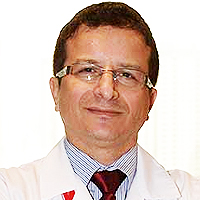Thrombolysis, the only Optimally Rapid Reperfusion Treatment
Published on: 23rd June, 2017
OCLC Number/Unique Identifier: 7286427398
Thrombolysis with tissue plasminogen activator (tPA) has been plagued by inadequate efficacy and a high risk of intracranial hemorrhage (ICH), which led to its replacement by procedures like percutaneous coronary intervention (PCI) whenever possible. Since this requires hospitalization, it is time-consuming, and compromising salvage of brain tissue and myocardium. Thrombolysis is the only first-line treatment that can provide sufficiently timely treatment for optimal recovery of organ function. However, for this potential to be realized, its efficacy and safety must be significantly improved over the current method. By adopting the sequential, synergistic fibrinolytic paradigm of the endogenous system, already verified by a clinical trial, this becomes possible. The endogenous system’s function is evidenced by the fibrinolytic product D-dimer that is invariably present in blood, and which increases >20-fold in the presence of thromboembolism. This system uses tPA to initiate lysis, which is then completed by the other fibrin-specific activator prourokinase (proUK). Since tPA and proUK in combination are synergistic in fibrinolysis, it helps explain their efficacy at their low endogenous concentrations.
A new heart: portraying the physiologic anatomo-functional reconstruction in ischemic cardiomyopathy
Published on: 15th September, 2017
OCLC Number/Unique Identifier: 7286353710
Fiber-based model of the left ventricle is known since 1628 but the complex 3D structure of myocardial fibers has not taken into account in normalcy or in disease until the last decade. We here present the case of a 60-year-old female patient affected by ischemic cardiomyopathy and severe left ventricular dysfunction. Left ventricle was reconstructed according to a novel surgical technique aimed at rebuilding an elliptical ventricular chamber and redirecting myocardial bundles of fibers in a near-normal orientation, by means of an original suturing technique. Left ventricular torsion was restored, proving the reorientation of myocardial fibres’ bundles. The restored physiologic shape was maintained along the years, gradually improving global ejection fraction and diastolic indices, showing a positive remodeling induced by the optimised geometrical and functional parameters.
The unexpected and never proven before renewal of ventricular torsion is an adjunctive element of ventricular efficiency, mainly in ventricles that work at a critical mechanics. A new fiber-based reading of heart function could improve clinical and functional outcomes and address some unsolved issues in the surgical treatment of ischemic cardiomyopathy as well as in medical approaches to the diseased myocardium.
Endogenous sensitizer of beta-adrenergic receptors (ESBAR) and its analogs (review)
Published on: 29th October, 2018
OCLC Number/Unique Identifier: 7929276791
The results of the 20 years studies of the presence in blood serum and other body fluids of endogenous modulators of adrenergic and M-cholinergic impact as a component of humoral link of autonomic nervous system. The article is devoted to the endogenous sensitizer of beta-adrenergic receptor (ESBAR) - water-soluble low molecular weight substances, analogs of which are histidine, tryptophan, tyrosine, mildronat and preductal. It is shown, that separate dilutions of human serum and animal (as a source of ESBAR) and analogs of ESBAR ways to enhance the effectiveness of activation of beta-adrenoceptors (AR) of smooth muscle (uterus, coronary and renal arteries, trachea, stomach), myocardium, erythrocytes and platelets (respectively influenced of histidine and tryptophan). It is reported that content of ESBAR in human serum (according to the titers of its dilution) depends on the sex and the presence of somatic diseases, and at women are also on the stage of reproduction and obstetric complications It is discussed possible mechanisms of ESBAR action, its physiological role, including as a component of beta-adrenoceptor inhibitory mechanism for myometrium, as well as the prospect of the use of analogs of ESBAR, including for the prevention of preterm labor, and for the treatment of bronchial asthma, coronary heart disease, hypertension and heart failure.
Stem cells in heart failure some considerations
Published on: 25th January, 2018
OCLC Number/Unique Identifier: 7325111402
Stem cell treatments depend not only on the type of cell to be used but also on the different implantation techniques. Intravascular cell injections are known to rapidly separate from the vessels. On the other hand, it is also well known that direct injection into the myocardium provides better coupling within the heart muscle. That were the cases of Embriofetal stem cell (HFDSC) or Autologous stem cells (ABMSC) in our experience focused on direct approaches.
Influence of Histidine on the contractility and adrenaline inotropic effect in the experiments with myocardium of right ventricular of Non pregnant and Pregnant Rats
Published on: 19th November, 2018
OCLC Number/Unique Identifier: 7929237612
It was investigated contractility and adrenoreactivity of intact myocardium strips of right ventricular in experiment with 60 rats. They were assessed by the force of induce contraction and its changes under the influence of adrenaline (10-9 or 10-5 g / ml). Found that these indicators do not depend on the phases of the estrous cycle and the presence of pregnancy. Histidine (10-10-10-4 g / ml) did not increase the response to adrenalin (10-9 g / ml), but increased the force of the contractions in rats in progesterone dominance (trend) and pregnancy (statistically significant). Against the background of propranolol (10-8 g / mL) or atenolol (10-8, 10-6 g / mL), adrenaline (10-5 g / mL) instead of increasing the force of contraction reduced it (probably due to activation of beta3-, alpha1 - and alpha1 a2- adrenergic receptors), and histidine (10-4 g / mL) prevented this reduction, but does not restore full ability of adrenaline to exert a positive inotropic effect. On the background of nicergoline (10-8 g / mL or nicergoline and propranolol (10-8 g / mL), adrenaline (10-5 g / mL) did not alter the force of contraction, and histidine (10-4 g/mL) restore ability of adrenaline to exert a positive inotropic effect but only in the experiments with nicergoline. Concluded that histidine increases the efficiency of the activation of all three (beta1-, beta2- and beta3-) populations of myocardial beta-adrenoceptoprs, including at lower by adrenergic blockers. Therefore, histidine proposed as an antagonist of beta-adrenergic blockers and as resensitizator of these receptors.
Core Tip: In the experiments with strips of the right ventricle of 40 nonpregnant and 20 pregnant rats histidine (10-10-10-4 g /mL) did not increase the response to adrenaline (10-9 g / ml), but increased the force of contractions in pregnant rats. On the background of propranolol (10-8 g / mL) or atenolol (10-8, 10-6 g / mL), adrenaline (10-5g/mL) showed a negative inotropic effect, and histidine (10-4 g / mL) prevented it, but does not restore the ability of adrenaline to show positive inotropic effect,. i.e histidine exhibits the properties of the antagonist of beta-blockers and of resensitizator of beta-adrenoceptors
The complex interplay in the regulation of cardiac pathophysiologic functionalities by protein kinases and phosphatases
Published on: 26th August, 2021
OCLC Number/Unique Identifier: 9225959643
Protein phosphorylation regulates several dimensions of cell fate and is substantially dysregulated in pathophysiological instances as evident spatiotemporally via intracellular localizations or compartmentalizations with discrete control by specific kinases and phosphatases. Cardiovascular disease manifests as an intricately complex entity presenting as a derangement of the cardiovascular system. Cardiac or heart failure connotes the pathophysiological state in which deficient cardiac output compromises the body burden and requirements. Protein kinases regulate several pathophysiological processes and are emerging targets for drug lead or discovery. The protein kinases are family members of the serine/threonine phosphatases. Protein kinases covalently modify proteins by attaching phosphate groups from ATP to residues of serine, threonine and/or tyrosine. Protein kinases and phosphatases are pivotal in the regulatory mechanisms in the reversible phosphorylation of diverse effectors whereby discrete signaling molecules regulate cardiac excitation and contraction. Protein phosphorylation is critical for the sustenance of cardiac functionalities. The two major contributory ingredients to progressive myocardium derangement are dysregulation of Ca2+ processes and contemporaneous elevated concentrations of reactive oxygen species, ROS. Certain cardiac abnormalities include cardiac myopathy or hypertrophy due to response in untoward haemodynamic demand with concomitant progressive heart failure. The homeostasis or equilibrium between protein kinases and phosphatases influence cardiac morphology and excitability during pathological and physiological processes of the cardiovascular system. Inasmuch as protein kinases regulate numerous dimensions of normal cellular functions, the pathophysiological dysfunctionality of protein kinase signaling pathways undergirds the molecular aspects of several cardiovascular diseases or disorders as related in this study. These have presented protein kinases as essential and potential targets for drug discovery and heart disease therapy.
Rats with Postinfarction Heart Failure: Effects of Propranolol Therapy on Intracellular Calcium Regulation and Left Ventricular Function
Published on: 28th November, 2023
Patients with heart failure may live longer if they receive chronic treatment with beta-adrenergic blocking medications. Unresolved are the mechanisms underlying the beneficial effects and if they may be applied to ischemic heart failure. Rats (n = 28) underwent echocardiographic-Doppler exams one and six weeks following a simulated operation or myocardial infarction (MI). After the first echocardiography, rats were randomized to either no therapy or 500 mg/l of propranolol in their drinking water. The noninfected left ventricular (LV) papillary muscles were used to record isometric contractions and intracellular Ca transients simultaneously.Untreated MI rats had a restrictive LV diastolic filling pattern, decreased systolic function (13% ± 2%), and significant LV dilatation (10.6 ± 0.4 mm vs. 8.9 ± 0.3 mm, MI vs. control). The LV chamber diameters of the propranolol-treated MI rats were 10.6 ± 0.5 mm, and systolic performance (13% ± 2%). Higher LV end-diastolic pressures (27 ± 2 mmHg vs. 20 ± 3 mmHg) and a more constrained LV diastolic filling pattern (increased ratio of early to late filling velocities and faster E wave deceleration rate) were seen in the propranolol-treated animals. Papillary muscle contractility in untreated MI rats was lower (1.6 ± 0.3 g mm²). Furthermore, the inotropic response to isoproterenol was attenuated, and Ca transients were extended. During isoproterenol stimulation, beta-adrenergic blocking administration had no effect on force development (1.6 ± 0.3 g mm²) or the length of Ca transients.Rats with postinfarction heart failure receiving chronic propranolol treatment did not have improvements in systolic function or LV remodeling. Propranolol exacerbated LV diastolic pressures and filling patterns. Additionally, there was no discernible improvement in intracellular contractility following treatment, Calcium control, or beta-adrenergic sensitivity in the myocardium that is not infarcted).
The Fulcrum of the Human Heart (Cardiac fulcrum)
Published on: 3rd January, 2024
Introduction: The functional anatomy of the myocardium allows envisioning that it initiates and ends at the origin of the great vessels. In our research, we have always considered that it should have a point of attachment to allow its helical rotation to fulfill the fundamental movements of shortening-torsion (systole) and lengthening-detorsion (suction), which once found, was called the cardiac fulcrum. Materials and methods: A total of 31 hearts, arising from the morgue and slaughterhouse were used: 17 corresponded to bovids and 14 were human. Anatomical and histological studies were performed. The heart was fixed in 10% buffered formalin. Hematoxylin-eosin, Masson’s trichrome staining technique, and 4-micron sections were used for the histological study, and 10 % formalin was used as a buffer. Results: The anatomical investigations have revealed that all the hearts (bovids and humans) have myocardial support whose histological structure in the analyzed specimens presents with an osseous or chondroid-tendinous character. In this structure, which we have called the cardiac fulcrum, are inserted the myocardial fibers at the origin and end of the band, which correspond to the continuous myocardium coiled as a helix.Conclusion: This description of the fulcrum would end the problem of lack of support of the myocardium to fulfill its function of suction/ejection.
















